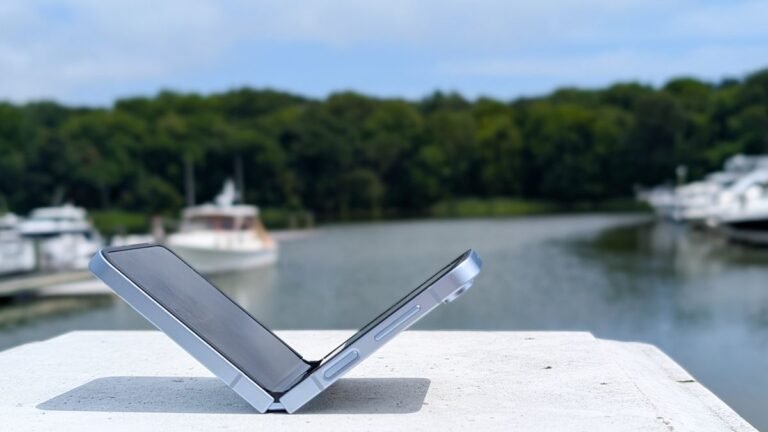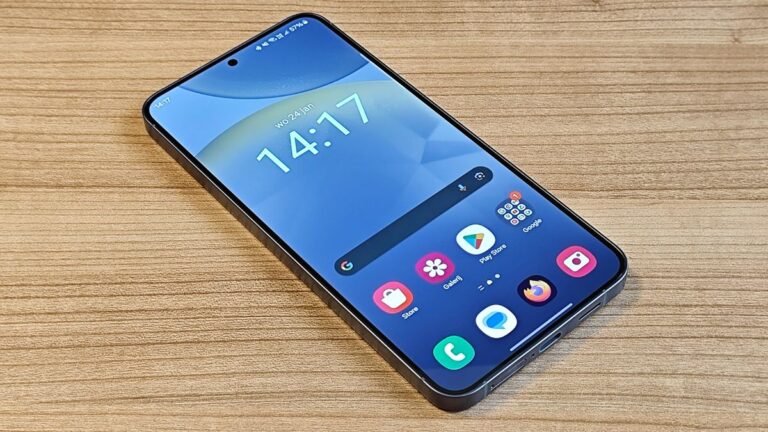NEWS |
I turned my iPhone into a serious filmmaking and photography tool with Shiftcam’s case, grip and lenses
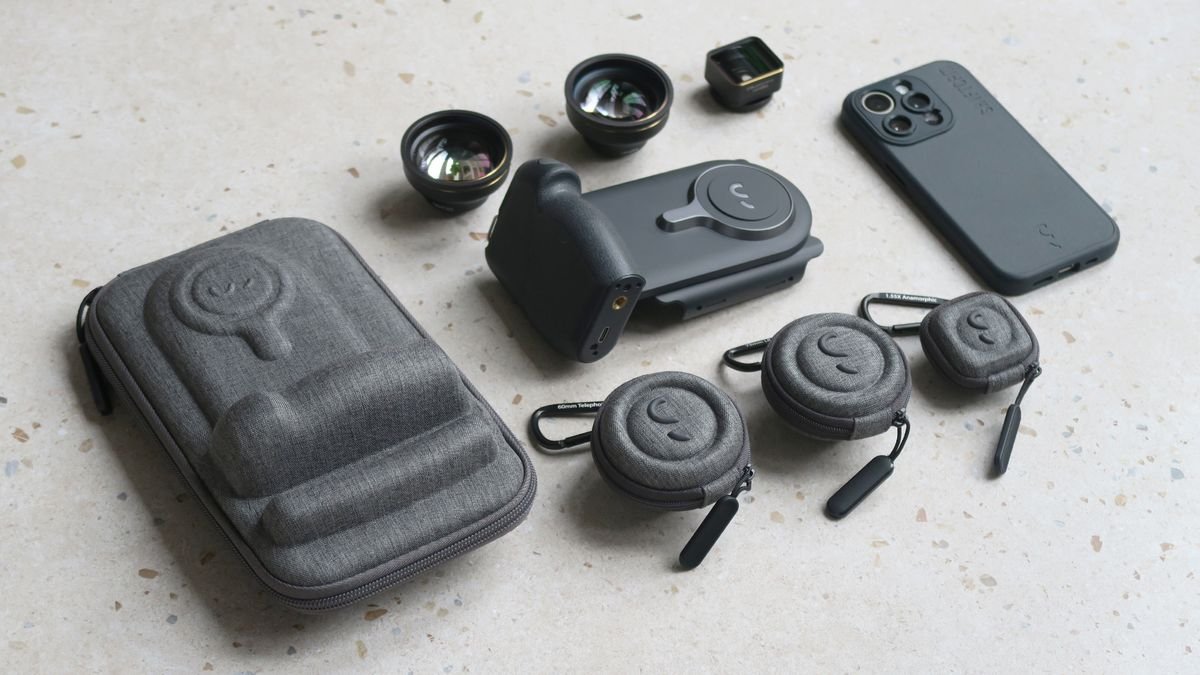
When I started out as a writer, I didn’t realize how much of my career would revolve around photography and videography, and since setting out as a freelance content creator, finding ways to get more out of the hardware I already have to hand has become more important than ever.
This is all to say that when the opportunity to test out a selection of ShiftCam’s wares arose, I jumped at the chance; in the hopes that they would help elevate the quality of output from my smartphone to the point where I no longer pined for one of the best vlogging cameras.
ShiftCam is a brand born from a run of crowdfunding successes. Starting out in 2017, with an iPhone case boasting an interchangeable lens system, to most recently releasing a complete ecosystem of magnetically interchangeable creator-focused mobile accessories, as part of its SnapSeries.
Whether you’re looking to elevate the look of your latest TikTok dance routine or shoot feature-length films with a professional-looking optical finish, ShiftCam has clearly worked to build a product portfolio that caters to real users’ needs.
I tested a range of offerings from ShiftCam’s back catalog, including the ProGrip, paired with their iPhone 15 Pro case, plus three entries from the top-tier LensUltra line: a 1.55x anamorphic, 75mm Long Range Macro and 60mm telephoto glass.
I’ve included purchase links for the best prices of the various Shiftcam accessories mentioned throughout this hands-on.
Table of Contents
ShiftCam ProGrip
ShiftCam has launched a couple of more svelte and lightweight options since the ProGrip, but if you’re after more control when handling your phone, there’s no disputing the reassurance the ProGrip offers.
It adds an excellent ergonomic handle – styled after that of a classic DSLR grip, accompanied by a removable padded strap which wraps around the back of your hand, collectively making long-term shooting much more comfortable and secure.
It’s unquestionably chunkier than the brand’s newer SnapGrip and SnapGrip Pro, which both connect to to your phone via MagSafe. The trade-off of opting instead for physical side grips, however, is support for a much wider range of devices – not just MagSafe-toting iPhones or Qi2-compatible devices (that’s still only the HMD Skyline at the time of writing) – while also offering added device protection, should you wish to set the ProGrip down with your phone still attached.
In spite of the solid form of this grip, it still lets you rotate the phone through 90-degrees, meaning landscape or portrait shooting without having to adjust your hand position is on the table.
The grip itself also packs in a few special features. It’s threaded on both the top and bottom, so you can easily attach it to a tripod, while also being able to append standardized accessories like boom mounts or LED light panels on top.
The grip’s design also allows it to double as a phone stand, keeping the phone pitched at around a 30-degree angle, which is ideal for desktop use and adds a surprising amount of value to the experience offered by the ProGrip.
Along the front of the grip, you’ll also notice a run of LEDs, used to convey Bluetooth and charging information, as the ProGrip can also charge your phone wirelessly over an integrated Qi-standard charger; ideal for long shoot days or just as a backup power bank in your bag.
In testing, I was able to refill my iPhone 15 Pro from flat to 80% using the phone ProGrip’s inbuilt wireless charging, but mileage will vary depending on your device. The only thing I would say is that heat dissipation isn’t great; the whole thing gets warm enough that I’d think twice before using it to recharge on a particularly hot day.
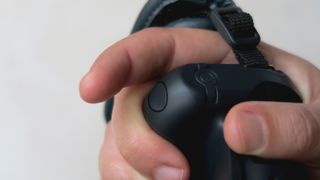
As for its Bluetooth functionality, pairing is as painless as you’d hope and serves a singular purpose: to enable use of the ProGrip’s integrated shutter button. The implementation – which is just as much a limitation of iOS as anything else – means there’s no dual-detent functionality to speak of (no half-press to focus or any such support like you get with the Camera Control button in the iPhone 16). The button is nonetheless well positioned on the grip and doesn’t require too much force to fire off. It just completes the feel of having a standard camera grip in-hand, and is far easier than tapping your phone’s volume key or an on-screen shutter.
The main challenge that the ProGrip really poses is bulk. ShiftCam supplies the ProGrip with a sturdy carry case, but its proportions are significantly larger than your smartphone’s outright; even if the pairing still collectively fall short of the size and weight of today’s best mirrorless cameras.
ShiftCam iPhone 15 Pro Camera Case
Having been responsible for content like our roundup of the best iPhone 15 cases in the past, I can spot a good case when I see one, and ShiftCam has by no means skimped with its current offerings.
It’s worth noting that I started testing all this kit out before I had my hands on the iPhone 16, however, the company has subsequently released a new run of cases for Apple‘s latest (at the time of writing) phones, which include support for the new Camera Control hardware, recycled fabric backs, and faster lens mounting with all the current LensUltra glass.
Back to the iPhone 15 cases, their rounded forms don’t add as much bulk as you might expect, while still feeling great in the hand and suitably protective. They’re MagSafe-compatible too, meaning interoperability with ShiftCam’s SnapSeries wares. They’re fabric-lined to keep the glass back of your iPhone scratch-free and vegan leather-backed, for some welcome additional grip and style.
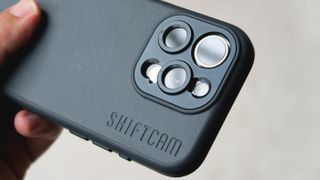
Aluminum serves both the buttons – which offer a confident ‘clicky’ feel – and the lens mounting plate, which sits across the phone’s cameras. Only the main and telephoto sensors get mounting options though; likely because you can pick up ultra-wide lenses as part of ShiftCam’s LensUltra line, and then benefit from the phone’s superior main sensor while still capturing a wider field of view.
ShiftCam LensUltra range
The trio of lenses I had the chance to test are just part of a collection of seven that make up ShiftCam’s current LensUltra range. They can all also be paired with various tailor-made CPL and VND filters, to augment the shooting experience further.
The 1.55x Anamorphic was the most exciting to try, simply for the sheer novelty of being able to capture ultra-widescreen footage using the full video aspect ratio crop of the iPhone’s sensor, whilst also gaining that iconic lens flare within my footage.
ShiftCam has managed to fit a square peg in a round hole, almost liiterally, by allowing the lens body to rotate 360-degrees freely atop a separate plate, which itself screws into the case’s mounting point. This allows you to align the lens so that it’s parallel with the horizon, and it’s stiff enough that it won’t twist out of place if your phone is being swung around.
One thing to note with the anamorphic lens is that as it operates on a fixed axis, so your phone needs to be super-stable, otherwise your footage suffers from strange warping, as I noticed when shooting handheld. Either mount your phone to a tripod or a gimbal for the best results.
See just how much more of the scene is captured when using the 1.55x Anamorphic, compared to the iPhone’s native 16:9 video capture below:
What’s more, there’s the editing workflow to consider. If this is your first time using an anamorphic lens, be ready to learn how to ‘de-squeeze’ video footage from 16:9 out to the lens’ native 2.76:1 (the same ultra-wide aspect ratio as Ultra Panavision 70 on 70mm, for the film nerds out there). It’s a bumpy learning curve but one that rewards you with dramatic, distinct looking footage at the other end.
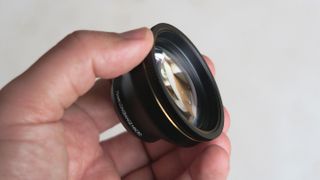
Although the iPhone already has a native macro mode, it can’t compete with the clarity and subject separation that the 75mm long-range macro was able to muster. Not only does it allow you to use the iPhone’s superior main sensor, in place of its ultra-wide, but you can capture subjects from much further away.
As well as having more megapixels to play with by opting for ShiftCam’s lens in place of the iPhone’s native ultra-wide-based macro solution, the 75mm long-range macro doesn’t suffer from any of the in-built offering’s distortion or chromatic aberration in its results either.
Above, the first shot show’s the iPhone’s native macro mode at its closest shooting distance to the subject. The second shot shows what ShiftCam’s 75mm lens is capable of at its closest shooting distance (bearing in mind you have at least twice as many megapixels to push in on, compared to the native 12MP macro mode). Lastly, you’re looking at the same shooting distance as was captured with the 75mm LensUltra glass, but with said lens removed, shooting, once again, with the iPhone’s native macro mode.
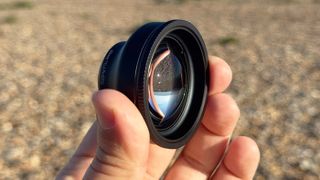
Another sizable piece of glass, ShiftCam’s 60mm telephoto is arguably the most versatile lens I tested; proving great for still and video capture across a variety of scenes, including content creation.
Not only does the 35mm focal length (working with the iPhone’s native 24mm main sensor to add up to 59mm) grant you a 2x magnification on the main sensor, but it also serves the phone’s inbuilt 2x optical sensor crop zoom (equating to 4x zoom on that main sensor). What’s more, with ShiftCam’s case you can also augment that telephoto sensor too, which natively tops out at 5x magnification on the iPhone 15 Pro Max and both Pro iPhone 16 models.
Aside from the obvious added bulk, there really aren’t any other trade-offs to consider with the LensUltra range, and in return you get wonderfully clear imagery, artistic lens flare, exceptional clarity from that coated fluorite glass and beautiful durable build quality, thanks to the lens’ milled aluminum construction.
I was presented with an unmistakable learning curve when getting to grips with ShiftCam’s assorted wares here, but there’s no denying that they collectively helped me elevate the kind of content I was able to pull from my humble iPhone. They allowed for greater quality and versatility, without the need for a myriad of different full-sized camera bodies and accompanying lenses, and I’m now left wonder where ShiftCam plans to take things next.
You might also like…
Related Posts
- The Galaxy S25 could be the first Samsung flagship phone to get seamless updates
- Samsung Galaxy S25 Ultra vs iPhone 16 Pro Max: Which flagship will win?
- It’s time to admit it — the Photos app redesign in iOS 18 delivers a better experience
- How to activate AirPods Pro 2 hearing aid
- Google could soon make sharing files from Android to iPhone much easier

